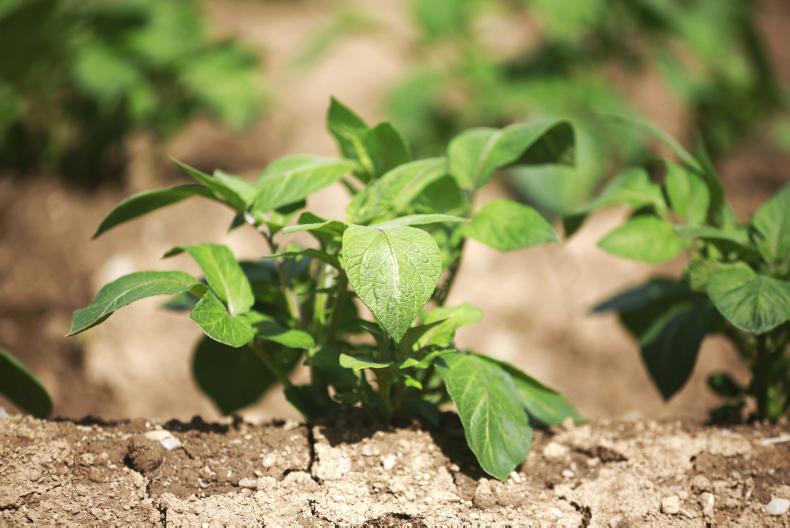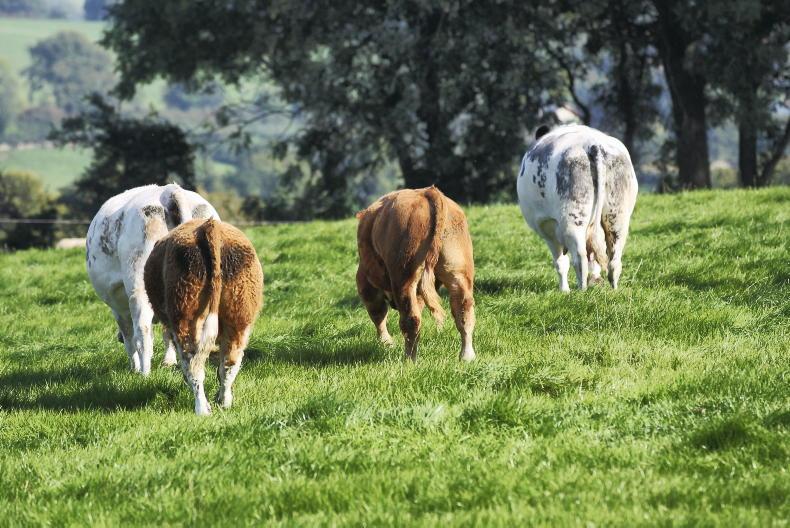National potato yields have recovered from 2018 levels, according to the annual Bord Bia pre-harvest yield estimate report.
The annual Bord Bia report is compiled by Teagasc and collates the results from field yield digs on rooster and Kerr’s Pink maincrop varieties across some of Ireland's key potato growing areas.
The results show that yield levels have recovered from 2018’s drought affected harvest, with average marketable yields (50–80 mm) for rooster coming in at 18.53 t/ac. Kerr’s Pink average marketable yields came in at 14.13t/ac. See table 1.
Main crop area increased marginally on 2018 area. At the time of the yield digs, the average yields of both rooster and Kerr’s Pink were ahead of the seven year average yield trends, see tables 2 and 3. Kerr’s Pink saw a 3.6% increase on the seven year average yield trend while Rooster saw a 15% increase.
County-by-county breakdown
The yield digs were carried out across seven counties and looked at undersized (< 50 mm), marketable (50 – 80 mm), oversized (> 80 mm) and waste potatoes. Learn how to conduct your own yield dig here or watch the video the Irish Farmers Journal conducted with Teagasc potato and tillage adviser Shane Kennedy in 2018.
Marketable Kerr’s Pink yields were highest in counties Louth and Kilkenny, at 14.21t/ac and lowest in Co Wexford at 13.31 t/ac. Wexford also saw the highest oversized yields while undersized tonnages were also high. See table 4 for the full list of results.
Wexford also saw higher marketable yields of Rooster crops, at 20.98t/ac. Co Meath recorded the lowest marketable yields at 16.24t/ac.
Undersized tonnages were between 2.2-2.7t/ac in all areas but waste was the highest in counties Louth, Kilkenny and Wicklow at 0.64t/ac. See table 5 for the full list of results.
Harvest losses
The yield estimates were conducted pre-harvest and do not account for the harvest losses. The 2019 potato harvest has been incredibly difficult for all growers involved due to wet weather and poor field conditions. The northeast and southwest bore the brunt of the poor weather.
In the latter half of the harvest, growers have reported significantly higher field losses due to harvest damage and damage from waterlogging. As the harvest has yet to be completed in all areas, it is difficult to quantify the volumes of these losses.
Remaining harvest
While many growers have finished their potato harvest, a handful of individual growers still have crops left top harvest. These growers have expressed their doubts at being able to harvest their remaining crops this year. Harvest areas range from 10% to 40% for these growers who are located in the south, southeast, northeast and northwest.
While potato crops have been harvested in January and February before, recent frosty nights are now a real cause for concern. Heavy losses are expected.
Read more
Watch: conducting a yield assessment in a potato crop
Irish main crop potato harvest lowest since 2012
National potato yields have recovered from 2018 levels, according to the annual Bord Bia pre-harvest yield estimate report.
The annual Bord Bia report is compiled by Teagasc and collates the results from field yield digs on rooster and Kerr’s Pink maincrop varieties across some of Ireland's key potato growing areas.
The results show that yield levels have recovered from 2018’s drought affected harvest, with average marketable yields (50–80 mm) for rooster coming in at 18.53 t/ac. Kerr’s Pink average marketable yields came in at 14.13t/ac. See table 1.
Main crop area increased marginally on 2018 area. At the time of the yield digs, the average yields of both rooster and Kerr’s Pink were ahead of the seven year average yield trends, see tables 2 and 3. Kerr’s Pink saw a 3.6% increase on the seven year average yield trend while Rooster saw a 15% increase.
County-by-county breakdown
The yield digs were carried out across seven counties and looked at undersized (< 50 mm), marketable (50 – 80 mm), oversized (> 80 mm) and waste potatoes. Learn how to conduct your own yield dig here or watch the video the Irish Farmers Journal conducted with Teagasc potato and tillage adviser Shane Kennedy in 2018.
Marketable Kerr’s Pink yields were highest in counties Louth and Kilkenny, at 14.21t/ac and lowest in Co Wexford at 13.31 t/ac. Wexford also saw the highest oversized yields while undersized tonnages were also high. See table 4 for the full list of results.
Wexford also saw higher marketable yields of Rooster crops, at 20.98t/ac. Co Meath recorded the lowest marketable yields at 16.24t/ac.
Undersized tonnages were between 2.2-2.7t/ac in all areas but waste was the highest in counties Louth, Kilkenny and Wicklow at 0.64t/ac. See table 5 for the full list of results.
Harvest losses
The yield estimates were conducted pre-harvest and do not account for the harvest losses. The 2019 potato harvest has been incredibly difficult for all growers involved due to wet weather and poor field conditions. The northeast and southwest bore the brunt of the poor weather.
In the latter half of the harvest, growers have reported significantly higher field losses due to harvest damage and damage from waterlogging. As the harvest has yet to be completed in all areas, it is difficult to quantify the volumes of these losses.
Remaining harvest
While many growers have finished their potato harvest, a handful of individual growers still have crops left top harvest. These growers have expressed their doubts at being able to harvest their remaining crops this year. Harvest areas range from 10% to 40% for these growers who are located in the south, southeast, northeast and northwest.
While potato crops have been harvested in January and February before, recent frosty nights are now a real cause for concern. Heavy losses are expected.
Read more
Watch: conducting a yield assessment in a potato crop
Irish main crop potato harvest lowest since 2012










SHARING OPTIONS